Search Result
Results for "
peroxisome
" in MedChemExpress (MCE) Product Catalog:
1
Biochemical Assay Reagents
4
Isotope-Labeled Compounds
| Cat. No. |
Product Name |
Target |
Research Areas |
Chemical Structure |
-
- HY-B0664
-
|
Win35833
|
PPAR
|
Metabolic Disease
|
|
Ciprofibrate (Win35833) is a potent peroxisome proliferator and increases the phosphorylation level of the PPARalpha . Ciprofibrate acts as an orally active hypolipidaemic agent and can be used for the research of primary hyperlipidaemias .
|
-
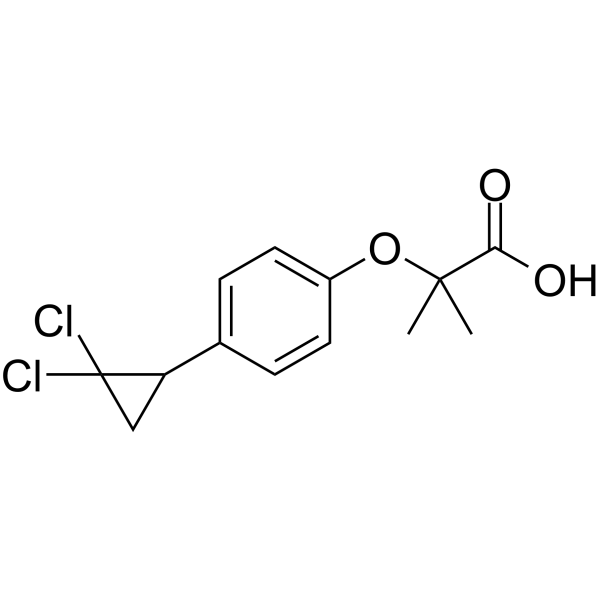
-
- HY-119964
-
|
|
Others
|
Cardiovascular Disease
|
|
Cetaben is a PPARα-independent peroxisome proliferator. Cetaben is a non-fibrate hypolipidemic agent and potently reduces the concentration of cholesterol and triglycerides .
|
-

-
- HY-113341
-
-
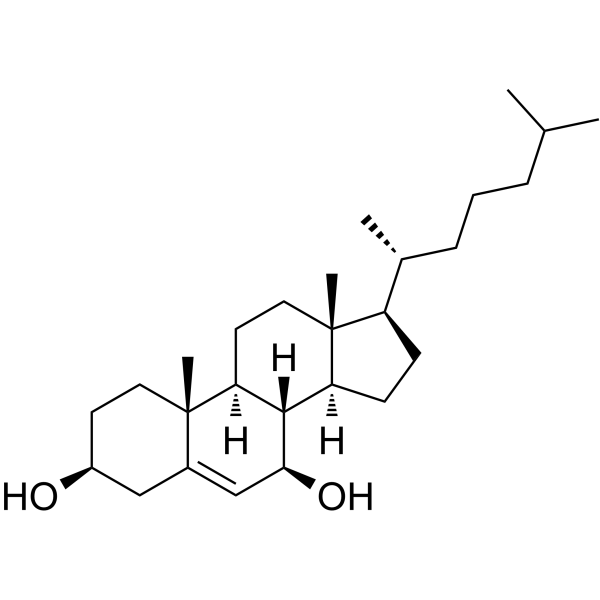
-
- HY-134377
-
|
ASP0367; MA-0211
|
PPAR
|
Metabolic Disease
|
|
Bocidelpar is a modulator of peroxisome proliferator-activated receptor delta (PPAR-δ). Bocidelpar improves mitochondrial biogenesis and function in Duchenne Muscular Dystrophy (DMD) muscle cells (extracted from patent WO2017062468A1, compound 2b) .
|
-
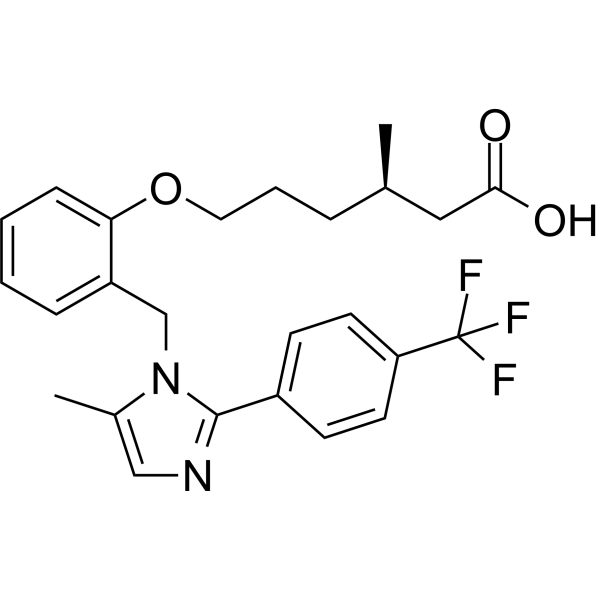
-
- HY-153982
-
|
|
PPAR
|
Metabolic Disease
|
|
PPARγ agonist 8 is an agonist of PPARγ. PPARγ agonist 8 induces peroxisome proliferator response element (PPRE)-luciferase activity with an EC50 of 0.2 μM .
|
-
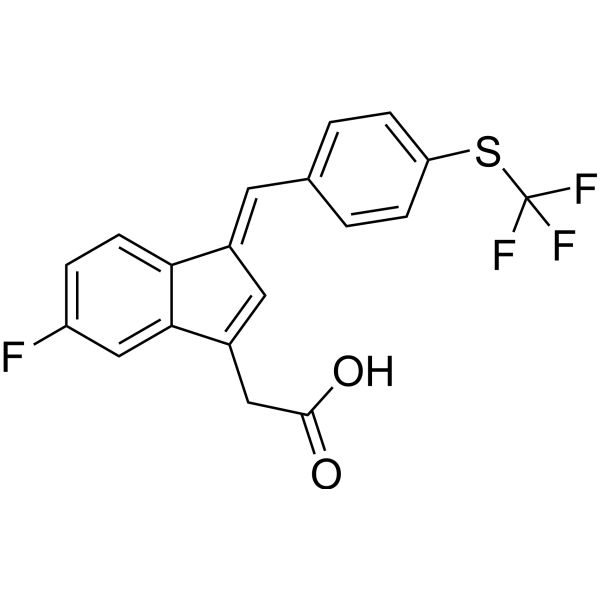
-
- HY-121538
-
|
|
Epoxide Hydrolase
PPAR
|
Cardiovascular Disease
|
|
CUDA is a potent inhibitor of soluble epoxide hydrolase (sEH), with IC50s of 11.1 nM and 112 nM for mouse sEH and human sEH, respectively . CUDA selectively increases peroxisome proliferator-activated receptor (PPAR) alpha activity. CUDA may be valuable for the research of cardiovascular disease .
|
-
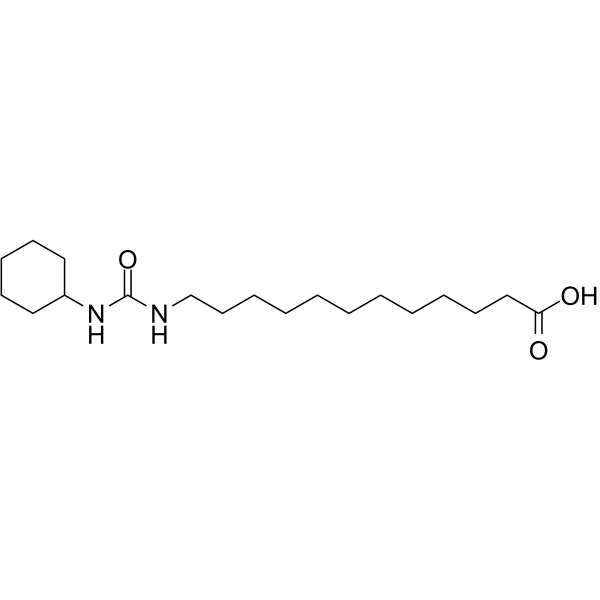
-
- HY-100189
-
|
|
Others
|
Metabolic Disease
|
|
LS2265 is a taurine derivative of fenofibrate and can induce proliferation of peroxisomes in liver cells of rats.
|
-

-
- HY-P2756
-
-

-
- HY-133777
-
|
|
PPAR
|
Cancer
|
|
Ciprofibrate impurity A is an impurity of Ciprofibrate. Ciprofibrate (Win35833) is a potent peroxisome proliferator, increases the phosphorylation level of the PPARalpha .
|
-

-
- HY-15577
-
|
|
PPAR
|
Cancer
|
|
GSK3787 is a selective and irreversible peroxisome proliferator-activated receptor δ (PPARδ) antagonist with pIC50 of 6.6.
|
-
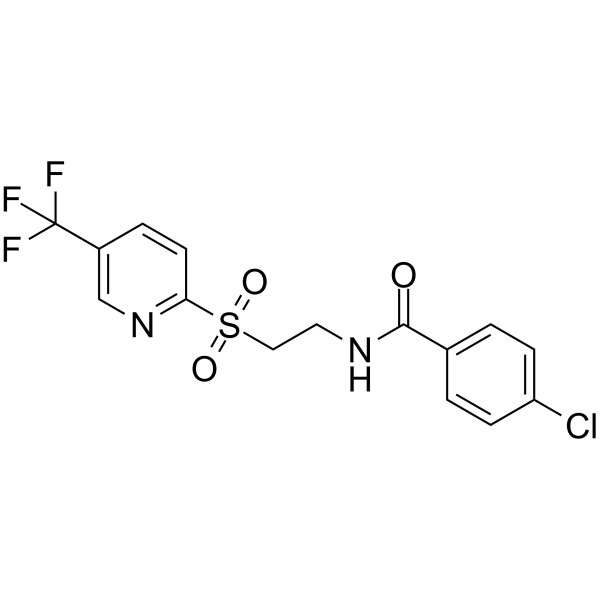
-
- HY-14831
-
|
MBX 102; JNJ 39659100
|
PPAR
|
Metabolic Disease
|
|
Arhalofenate (MBX 102) is a selective partial agonist of peroxisome proliferator-activated receptor (PPAR)-γ, used for the treatment of type 2 diabetes.
|
-

-
- HY-101746
-
|
|
PPAR
|
Metabolic Disease
|
|
GSK376501A is a selective peroxisome proliferator-activated receptor gamma (PPARγ) modulator for the treatment of type 2 diabetes mellitus .
|
-
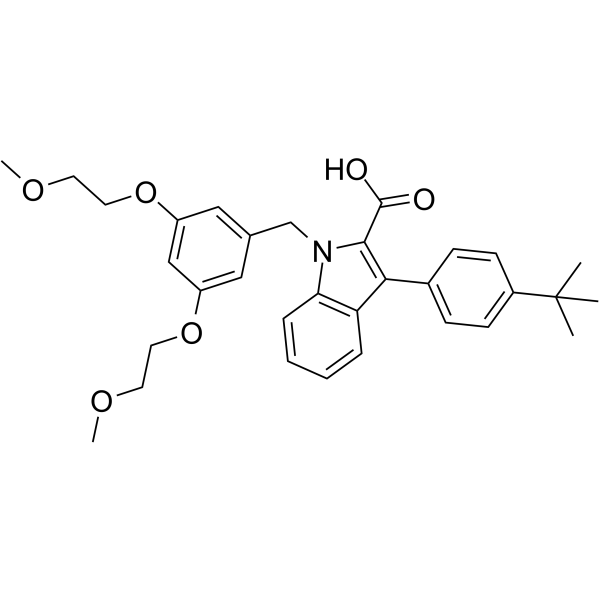
-
- HY-B0664S
-
-
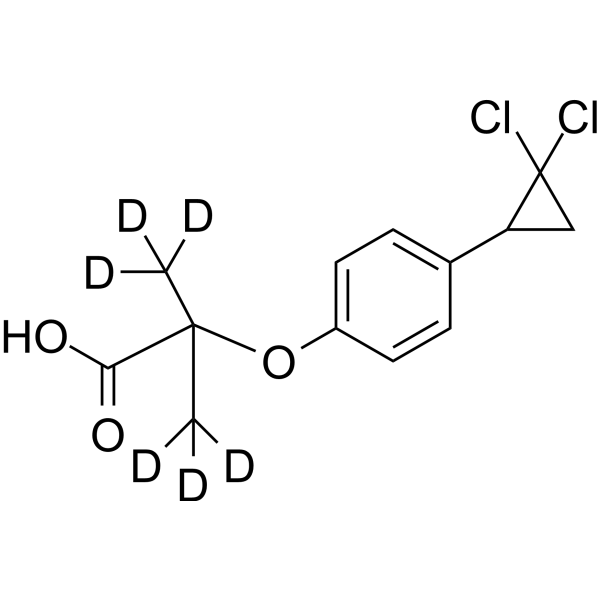
-
- HY-17538
-
ZLN005
Maximum Cited Publications
25 Publications Verification
|
PGC-1α
Autophagy
|
Metabolic Disease
|
|
ZLN005 is a potent activator of peroxisome proliferator-activated receptor-γ coactivator-1α (PGC-1α) .
|
-

-
- HY-153344
-
|
|
PPAR
|
Cancer
|
|
FX-909 is a covalent peroxisome proliferator-activated receptor gamma (PPARG) inverse agonist. FX-909 can be used for the research of cancer .
|
-

-
- HY-120188
-
|
|
PPAR
|
Others
|
|
CC618 is a selective peroxisome proliferator-activated receptor (PPARβ/δ) antagonist that exhibits antagonism by covalently binding to PPARβ/δ receptors .
|
-
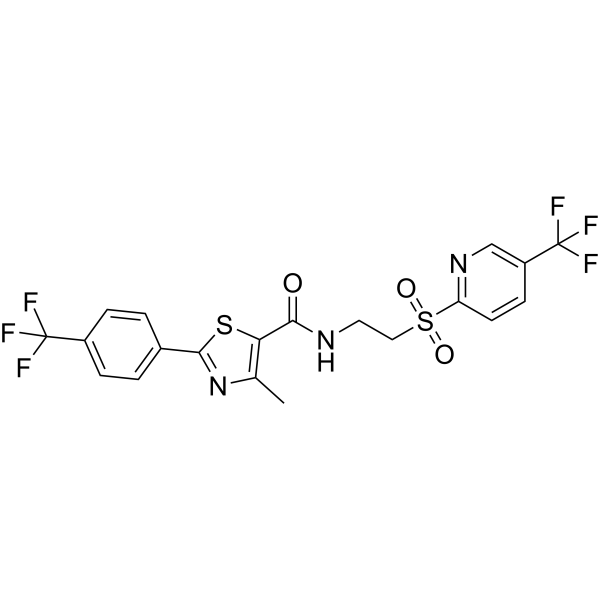
-
- HY-U00036A
-
|
LY519818
|
PPAR
|
Metabolic Disease
|
|
Naveglitazar (LY519818) is a nonthiozolidinedione peroxisome proliferator-activated receptor (PPAR) α-γ dual, γ-dominant agonist that has shown glucose-lowering potential in animal models .
|
-
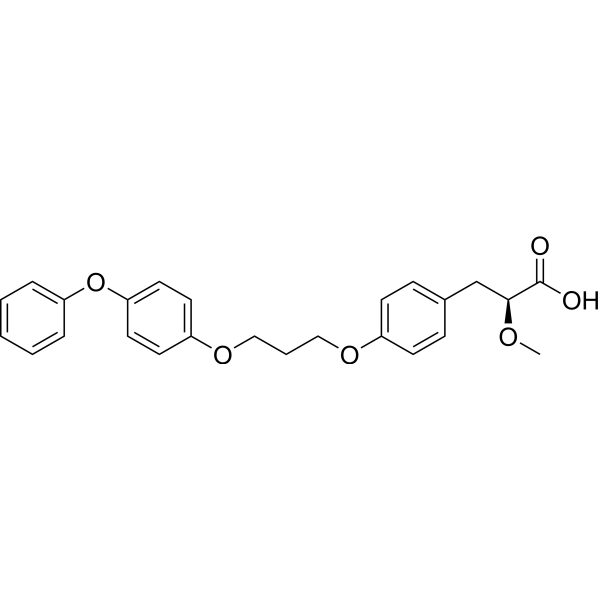
-
- HY-19937
-
|
|
PPAR
|
Metabolic Disease
|
|
Saroglitazar is a novel peroxisome proliferator-activated receptor (PPAR) agonist with predominant PPARα and moderate PPARγ activity with EC50 values of 0.65 pM and 3 nM in HepG2 cells, respectively.
|
-
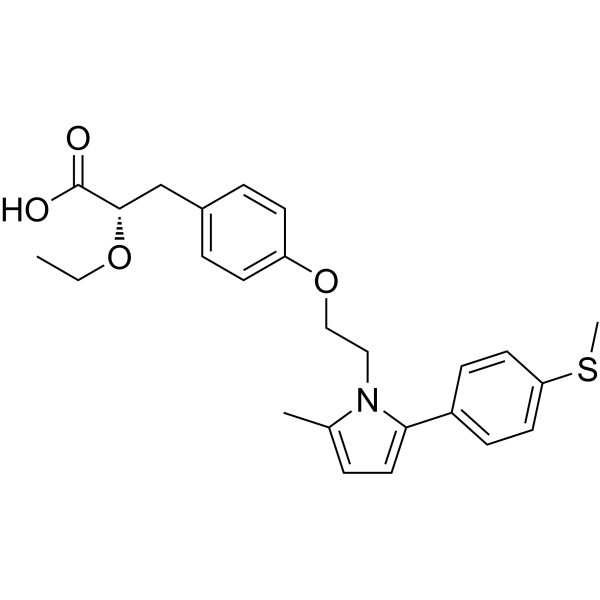
-
- HY-19937A
-
|
|
PPAR
|
Metabolic Disease
|
|
Saroglitazar magnesium is a novel peroxisome proliferator-activated receptor (PPAR) agonist with predominant PPARα and moderate PPARγ activity with EC50 values of 0.65 pM and 3 nM in HepG2 cells, respectively.
|
-

-
- HY-104049
-
|
IVA337
|
PPAR
|
Metabolic Disease
Cancer
|
|
Lanifibranor is a pan peroxisome proliferator-activated receptor (PPAR) agonist with EC50s of 1.5, 0.87 and 0.21 μM for human PPARα, PPARσ and PPARγ, respectively.
|
-
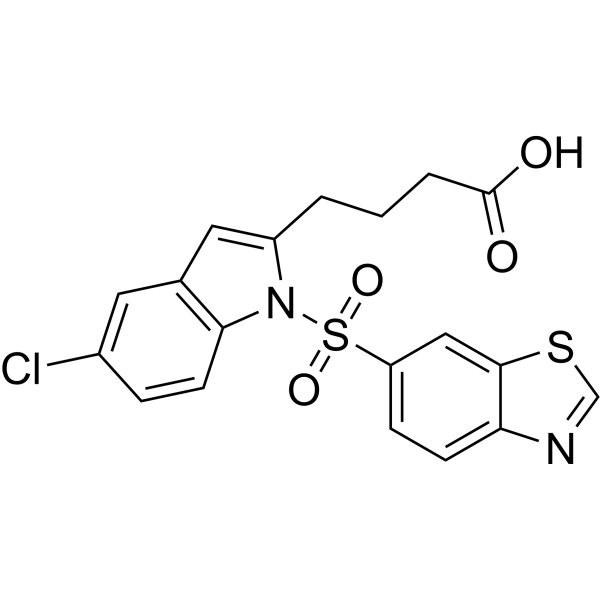
-
- HY-N3026
-
|
|
PPAR
|
Metabolic Disease
|
|
Soyasaponin Ab is a soyasaponin that exerts an anti-obesity effect in 3T3-L1 adipocytes through downregulation of peroxisome proliferator-activated receptor γ (PPARγ) .
|
-
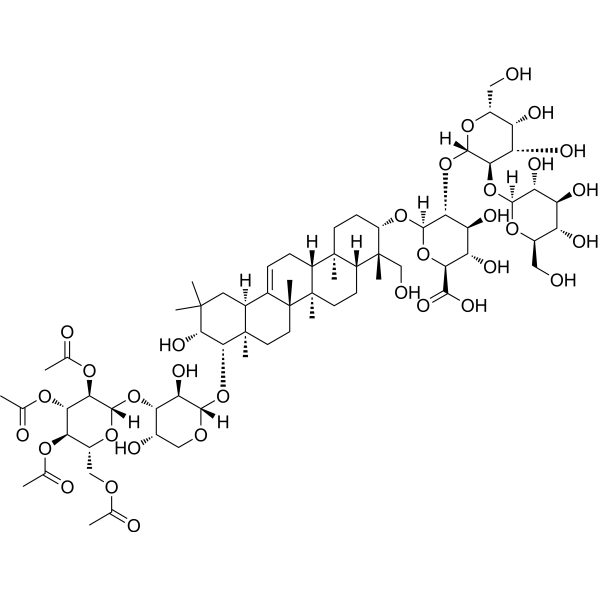
-
- HY-N3027
-
|
|
PPAR
|
Metabolic Disease
|
|
Soyasaponin Aa is a soyasaponin that exerts an anti-obesity effect in 3T3-L1 adipocytes through downregulation of peroxisome proliferator-activated receptor γ (PPARγ) .
|
-
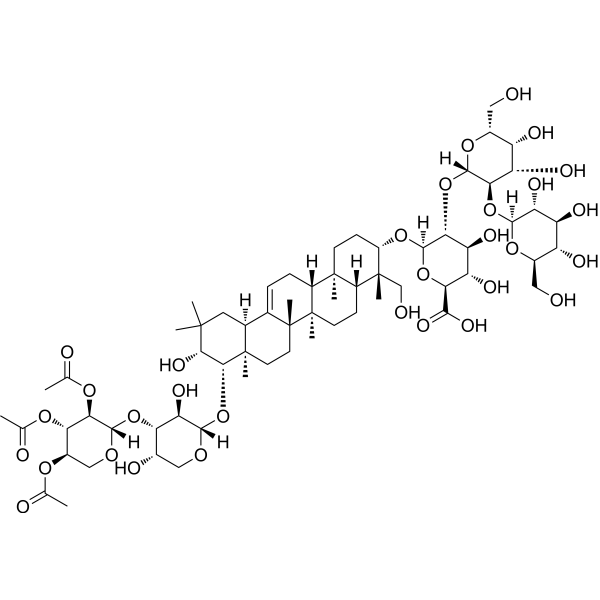
-
- HY-U00036
-
|
LY519818 racemate
|
PPAR
|
Metabolic Disease
|
|
Naveglitazar racemate (LY519818 racemate) is the racemate of Naveglitazar. Naveglitazar is a nonthiozolidinedione peroxisome proliferator-activated receptor (PPAR) α-γ dual, γ-dominant agonist that has shown glucose-lowering potential in animal models .
|
-
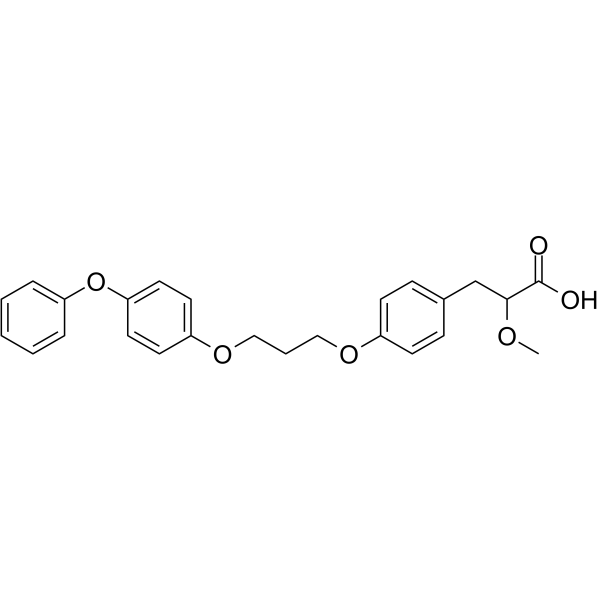
-
- HY-128344
-
|
|
PARP
Apoptosis
|
Metabolic Disease
|
|
BR102375 is a non-TZD peroxisome proliferator-activated receptor γ (PPAR γ) full agonist for the treatment of type 2 diabetes, reveals EC50 value of 0.28 μM and Amax ratio of 98% .
|
-
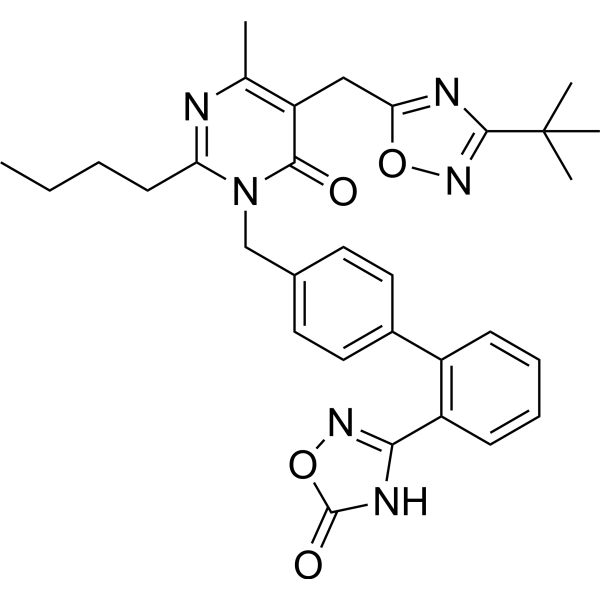
-
- HY-113473
-
|
|
PPAR
|
Metabolic Disease
Inflammation/Immunology
Cancer
|
|
10-Nitrolinoleic acid is a potent peroxisome proliferator-activated receptor γ (PPARγ) agonist. 10-Nitrolinoleic acid competes with [ 3H]Rosiglitazone for binding to PPAR-γ, with an IC50 of 0.22 μM .
|
-
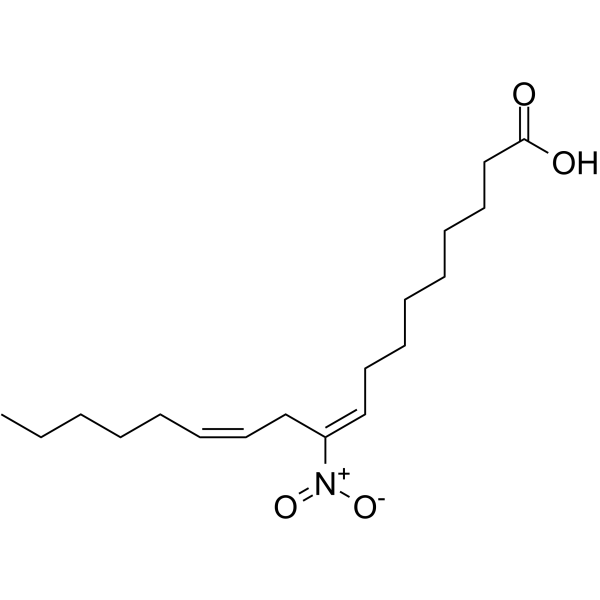
-
- HY-120160A
-
|
CP 86325 Sodium
|
PPAR
|
Neurological Disease
Metabolic Disease
|
|
Darglitazone Sodium, a thiazolidinedione, is an orally active, potent, and selective PPAR-γ (peroxisome proliferator-activated receptor) agonist. Darglitazone Sodium is effective in controlling blood glucose and lipid metabolism, and can be used for type II diabetes research .
|
-
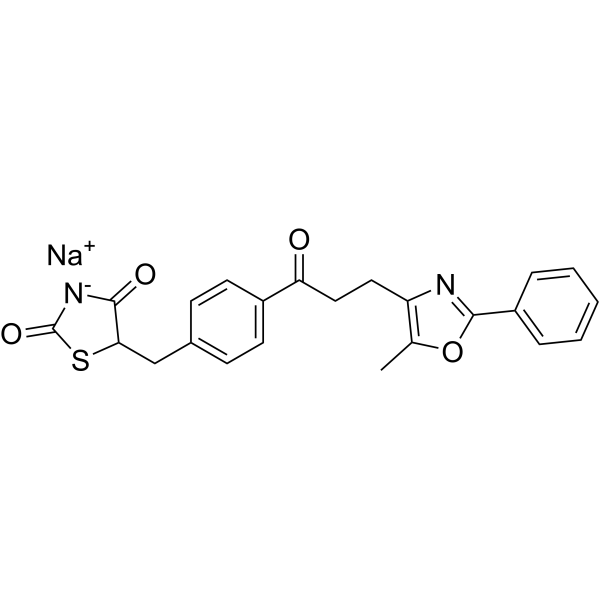
-
- HY-108572
-
|
|
PPAR
|
Cardiovascular Disease
Metabolic Disease
|
|
S26948 is a specific peroxisome proliferator-activated receptor γ (PPARγ) modulator (EC50=8.83 nM) with potent antidiabetes and antiatherogenic effects. S26948 is a specific high-affinity agonist for PPARγ .
|
-
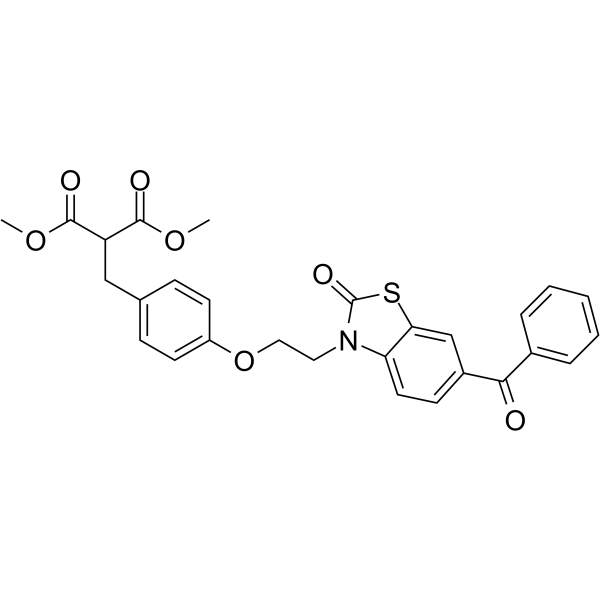
-
- HY-118514
-
|
|
PPAR
|
Metabolic Disease
|
|
CAY10514 is an aromatic of 8(S)-HETE. CAY10514 acts as a dual agonist of peroxisome proliferator-activated receptor α (PPARα) and PPARγ with IC50 of 0.173 and 0.642 μM, respectively .
|
-
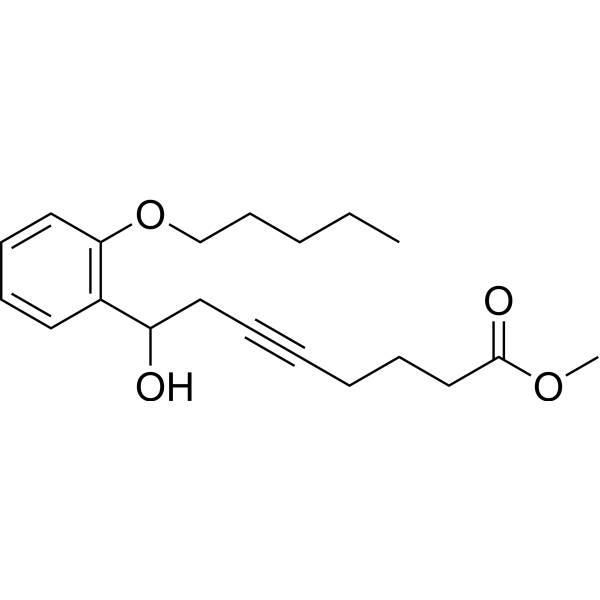
-
- HY-113631
-
|
|
PPAR
|
Neurological Disease
Metabolic Disease
|
|
Amorfrutin B is a highly potent natural peroxisome proliferation-activated receptor γ (PPARγ) agonist with oral activity with Ki values of 19 nM and EC50 values of 73 nM, respectively. Amorfrutin B has hypoglycemic and neuroprotective activities .
|
-
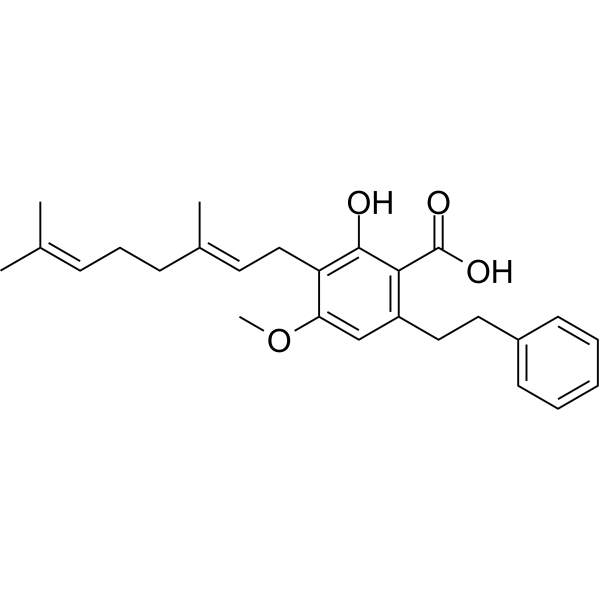
-
- HY-17538S
-
|
|
PGC-1α
Autophagy
|
Metabolic Disease
|
|
ZLN005-d4 is deuterium labeled ZLN005. ZLN005 is a potent activator of peroxisome proliferator-activated receptor-γ coactivator-1α (PGC-1α)[1].
|
-
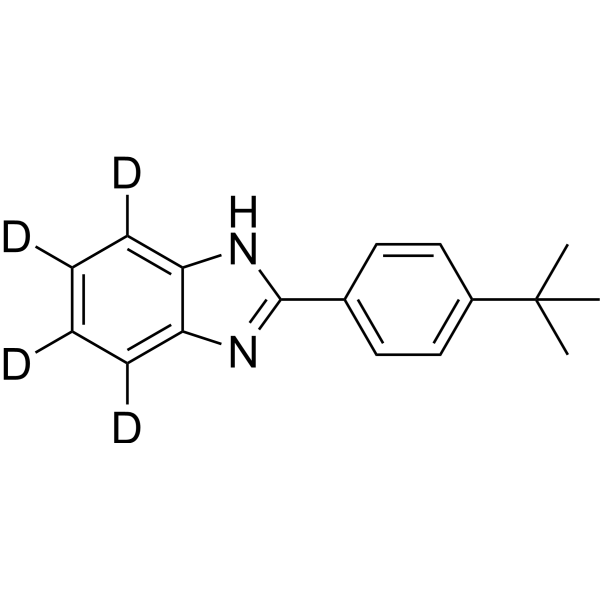
-
- HY-B0664R
-
|
Win35833 (Standard)
|
PPAR
|
Metabolic Disease
|
|
Ciprofibrate (Standard) is the analytical standard of Ciprofibrate. This product is intended for research and analytical applications. Ciprofibrate (Win35833) is a potent peroxisome proliferator and increases the phosphorylation level of the PPARalpha . Ciprofibrate acts as an orally active hypolipidaemic agent and can be used for the research of primary hyperlipidaemias .
|
-
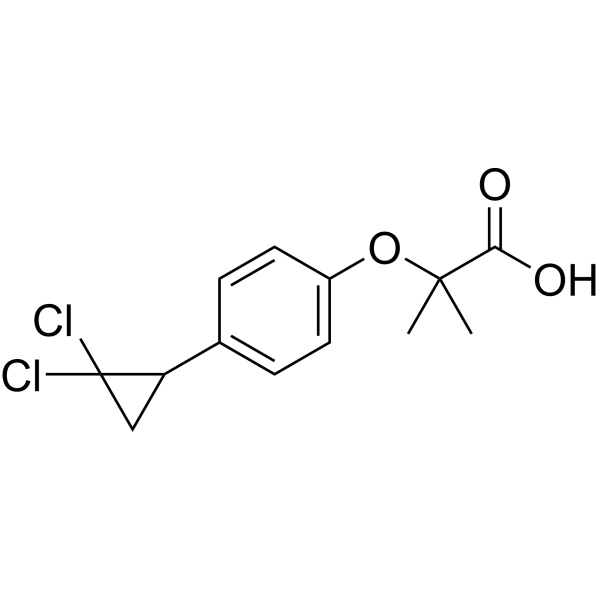
-
- HY-B1836
-
|
MET-88; Quaterin
|
Mitochondrial Metabolism
|
Cardiovascular Disease
Metabolic Disease
|
|
Meldonium (MET-88) functions as a cardioprotective agent by cpmpetetively inhibiting γ-butyrobetaine hydroxylase (BBOX) and carnitine/organic cation transporter type 2 (OCTN2). Mildronate (Meldonium) exhibits IC50 values of 34-62 μM for human recombinant BBOX and an EC50 of 21 μM for human OCTN2. Meldonium is a fatty acid oxidation inhibitor .
|
-
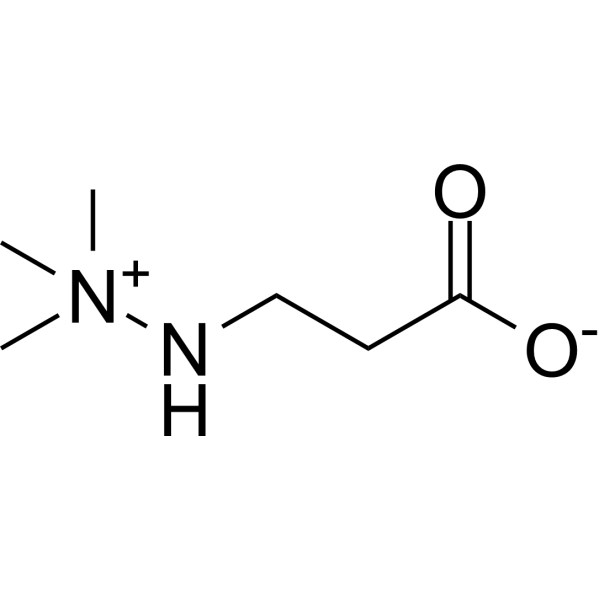
-
- HY-114739
-
|
|
PPAR
|
Metabolic Disease
|
|
MA-0204 is a potent, highly selective and orally available peroxisome proliferator activated receptor δ (PPARδ) modulator with EC50s of 0.4 nM, 7.9 nM and 10 nM for human, mouse and rat PPARδ, respectively. Potential treatment for Duchene Muscular Dystrophy (DMD) .
|
-
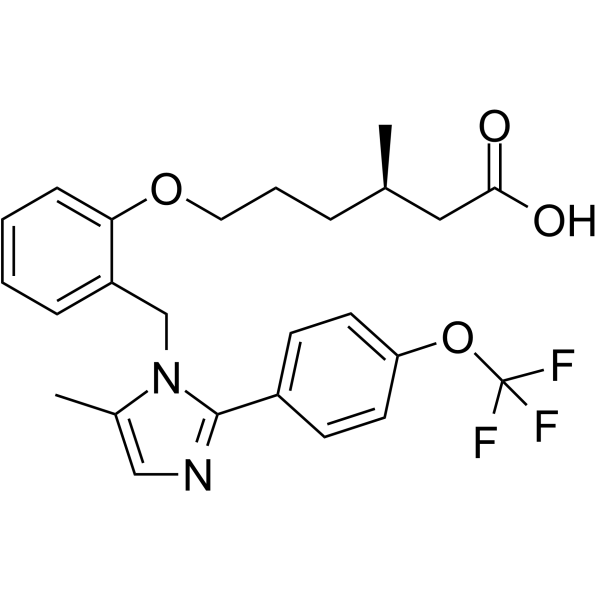
-
- HY-N1990
-
|
|
|
|
|
Gypenoside XLIX, a dammarane-type glycoside, is a prominent component of G. pentaphyllum. Gypenoside XLIX is a selective peroxisome proliferator-activated receptor (PPAR)-alpha activator and inhibits cytokine-induced vascular cell adhesion molecule-1 (VCAM-1) overexpression and hyperactivity in human endothelial cells .
|
-

-
- HY-19937S1
-
|
|
Isotope-Labeled Compounds
|
Others
|
|
Saroglitazar-d4 is the deuterium-labeled Saroglitazar (HY-19937). Saroglitazar-d4 is a novel peroxisome proliferator-activated receptor (PPAR) agonist with predominant PPARα and moderate PPARγ activity with EC50 values of 0.65 pM and 3 nM in HepG2 cells, respectively.
|
-
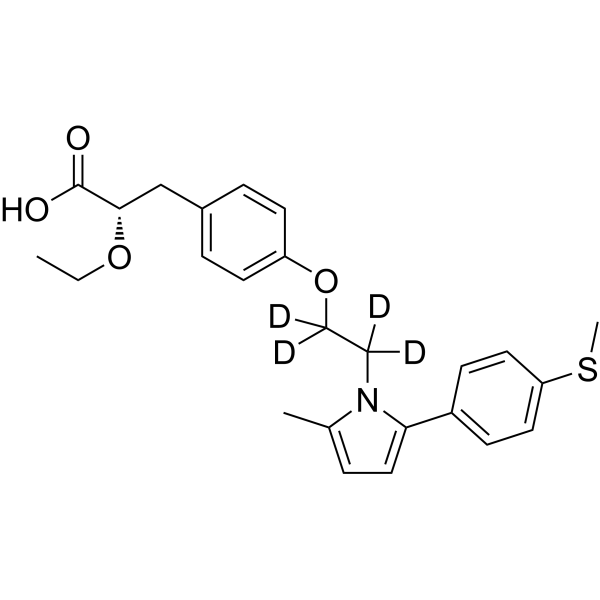
-
- HY-15655
-
|
|
PPAR
|
Neurological Disease
Metabolic Disease
|
|
GW 1929 is an orally active peroxisome proliferator-activated receptor-γ (PPARγ) agonist with a pKi of 8.84 for human PPAR-γ, and pEC50s of 8.56 and 8.27 for human PPAR-γ and murine PPAR-γ, respectively. GW 1929 (hydrochloride) has antidiabetic efficacy and neuroprotective potential .
|
-
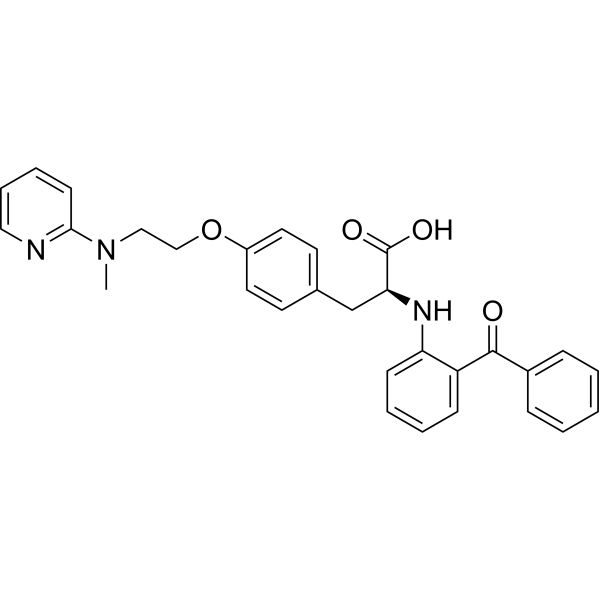
-
- HY-13956
-
Pioglitazone
Maximum Cited Publications
25 Publications Verification
U 72107
|
PPAR
Ferroptosis
|
Metabolic Disease
Cancer
|
|
Pioglitazone (U 72107) is an orally active and selective PPARγ (peroxisome proliferator-activated receptor) agonist with high affinity binding to the PPARγ ligand-binding domain with EC50 of 0.93 and 0.99 μM for human and mouse PPARγ, respectively. Pioglitazone can be used in diabetes research .
|
-
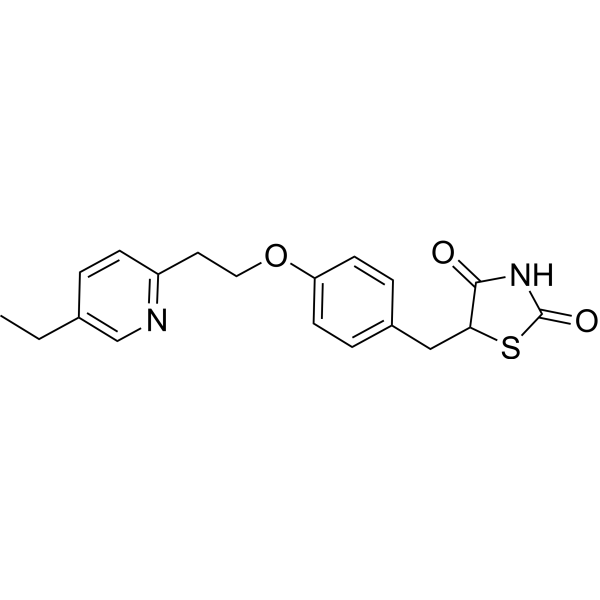
-
- HY-13956B
-
|
U 72107 potassium
|
PPAR
Ferroptosis
|
Metabolic Disease
Cancer
|
|
Pioglitazone (U 72107) potassium is an orally active and selective PPARγ (peroxisome proliferator-activated receptor) agonist with high affinity binding to the PPARγ ligand-binding domain with EC50 of 0.93 μM and 0.99 μM for human and mouse PPARγ, respectively. Pioglitazone potassium can be used in diabetes research .
|
-

-
- HY-163443
-
|
|
PPAR
|
Others
|
|
PPAR agonist 4 (Compound 12) is an orally active agonist for peroxisome proliferator-activated receptor (PPAR), which activates PPARα, PPARδ and PPARγ with EC50s of 0.7, 0.7 and 1.8 μM, respectively. PPAR agonist 4 exhibits anti-liver fibrosis efficacy .
|
-

-
- HY-113341S
-
|
|
Isotope-Labeled Compounds
|
|
|
7ß-Hydroxycholesterol-d7 is the deuterium labeled 7α-Hydroxycholesterol. 7β-Hydroxycholesterol is an oxysterol that derived by the oxidation of cholesterol. 7β-hydroxycholesterol is a powerful inducer of oxidative stress, inducing dysfunction of organelles (mitochondria, lysosomes and peroxisomes) that can cause cell death[1][2].
|
-

-
- HY-139040
-
|
|
PPAR
|
Metabolic Disease
|
|
2-Tetradecylthio acetic acid is a pan-peroxisome proliferator activated receptor (pan-PPAR) activator. 2-Tetradecylthio acetic acid induces hypolipidemia. 2-Tetradecylthio acetic acid reduces plasma lipids and enhances hepatic fatty acid oxidation in rodents. 2-Tetradecylthio acetic acid increases the expression of genes involved in fatty acid uptake, activation, accumulation, and oxidation .
|
-
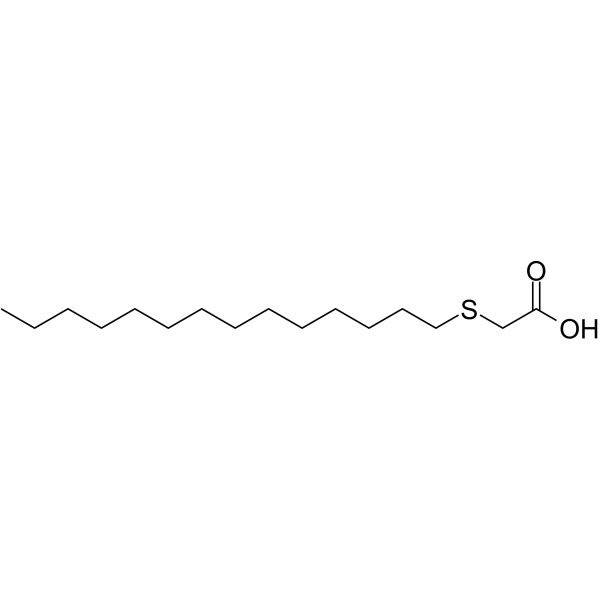
-
- HY-155704
-
|
|
Others
|
Others
|
|
DPP-IV-IN-5 is isolated from the fruits of Lycium barbarum. DPP-IV-IN-5 exerts moderate agonistic activities for peroxisome proliferator-activated receptor (PPARγ) with EC50 values of 10.09 - 44.26 μM and also presents inhibitory activity on dipeptidyl peptidase-4 (DPPIV) with an IC50 value of 47.13 μM .
|
-

-
- HY-N8122
-
|
|
Akt
|
Cancer
|
|
24-Methylenecycloartanyl ferulate is a γ-oryzanol compound. 24-Methylenecycloartanyl ferulate promotes parvin-beta expression in human breast cancer cells. 24-Methylenecycloartanyl ferulate is a potential ATP-competitive Akt1 inhibitor (EC50= 33.3μM) .
|
-

-
- HY-110022
-
|
|
PPAR
|
Neurological Disease
Metabolic Disease
Inflammation/Immunology
Cancer
|
|
GW1929 hydrochloride is an orally active peroxisome proliferator-activated receptor-γ (PPARγ) agonist with a pKi of 8.84 for human PPAR-γ, and pEC50s of 8.56 and 8.27 for human PPAR-γ and murine PPAR-γ, respectively. GW1929 hydrochloride has antidiabetic efficacy and neuroprotective potential. GW1929 hydrochloride suppresses neuronal apoptosis and shows anti-inflammatory potential .
|
-
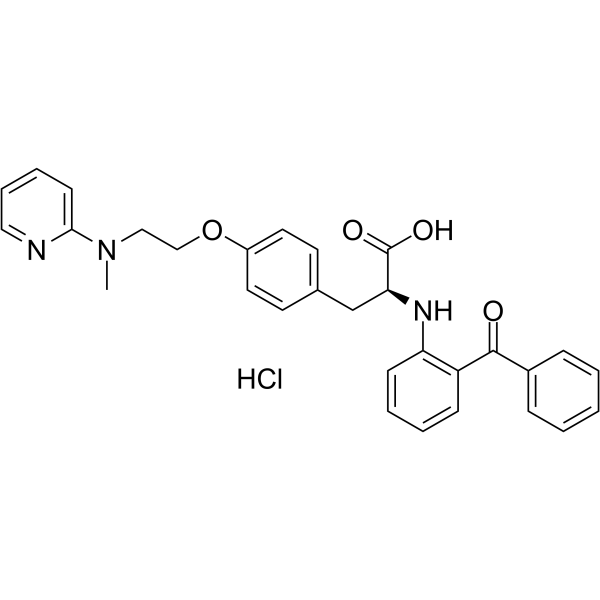
-
- HY-143862
-
|
|
PPAR
|
Metabolic Disease
|
|
Pparδ agonist 7 is a potent agonist of Pparδ. The peroxisome proliferator-activated receptor (PPAR) is a member of the intranuclear receptor transcription factor superfamily that plays a key role in the regulation of metabolic homeostasis, inflammation, cell growth and differentiation in vivo. Pparδ agonist 7 has the potential for the research of non-alcoholic fatty liver disease (NAFLD) (extracted from patent WO2019105234A1, compound TM4) .
|
-

-
- HY-143863
-
|
|
PPAR
|
Metabolic Disease
|
|
Pparδ agonist 8 is a potent agonist of Pparδ. The peroxisome proliferator-activated receptor (PPAR) is a member of the intranuclear receptor transcription factor superfamily that plays a key role in the regulation of metabolic homeostasis, inflammation, cell growth and differentiation in vivo. Pparδ agonist 8 has the potential for the research of non-alcoholic fatty liver disease (NAFLD) (extracted from patent WO2021169769A1, compound TM2) .
|
-

-
- HY-122632
-
|
|
Hedgehog
|
Cancer
|
|
Ciliobrevin D is a cell-permeable, reversible and specific inhibitor of AAA+ ATPase motor cytoplasmic dynein. Ciliobrevin D inhibits Hedgehog (Hh) signaling and primary cilia formation. Ciliobrevin D inhibits dynein-dependent microtubule gliding and ATPase activity in vitro .
|
-

-
- HY-117103
-
|
INT131
|
PPAR
|
Metabolic Disease
|
|
AMG131 (INT131), a potent and highly selective PPARγ partial agonist, binds to PPARγ and displaces Rosiglitazone with a Ki of ~10 nM. AMG131 can be used for research of type-2 diabetes mellitus (T2DM) .
|
-
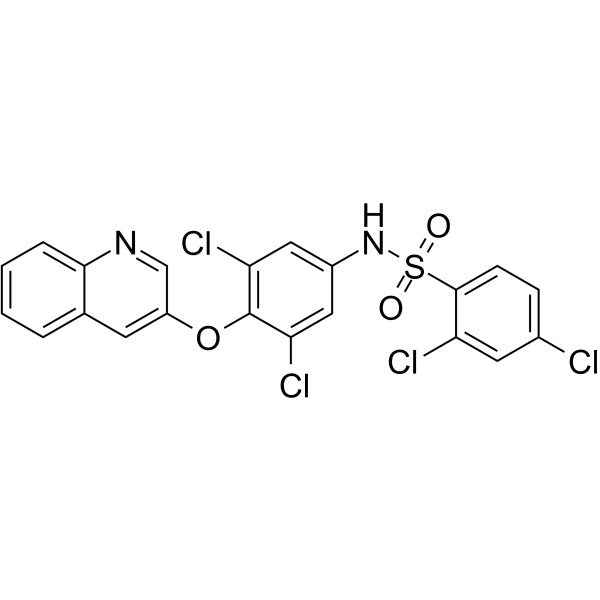
-
- HY-17444
-
|
|
PPAR
|
Metabolic Disease
Cancer
|
|
Tesaglitazar is a dual peroxisome proliferator-activated receptor (PPAR) alpha/gamma agonist that is more potent on PPARγ than on PPARα, with EC50s of 13.4 μM and 3.6 μM for rat PPARα and human PPARα, respectively, and approximately 0.2 μM for both rat and human PPARγ. Tesaglitazar induces interstitial mesenchymal cell DNA synthesis and fibrosarcomas in subcutaneous tissues in rats .
|
-
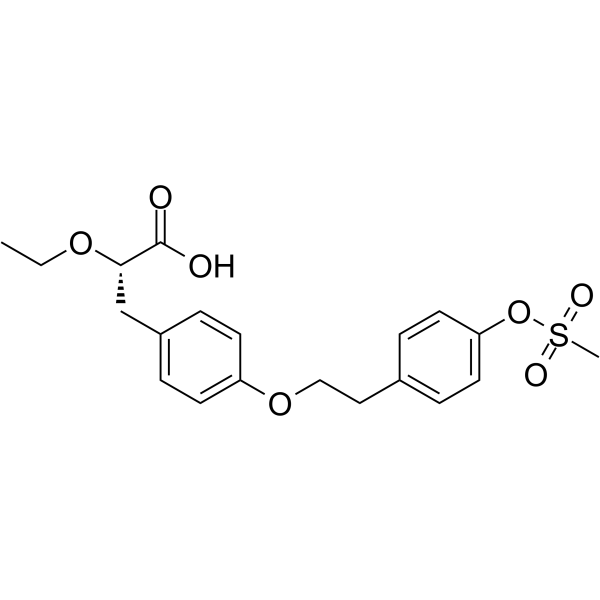
-
- HY-101676
-
|
NID 525
|
Leukotriene Receptor
PPAR
Cytochrome P450
|
Metabolic Disease
|
|
RG-12525 is a a specific, competitive and orally effective antagonist of the peptidoleukotrienes, LTC4, LTD4 and LTE4, inhibiting LTC4-, LTD4- and LTE4-inducd guinea pig parenchymal strips contractions, with IC50s of 2.6 nM, 2.5 nM and 7 nM, respectively; RG-12525 is also a peroxisome proliferator-activated receptor gamma (PPAR-gamma) agonist with IC50 of appr 60 nM and a potent inhibitor of CYP3A4, with a Ki value of 0.5 µM.
|
-
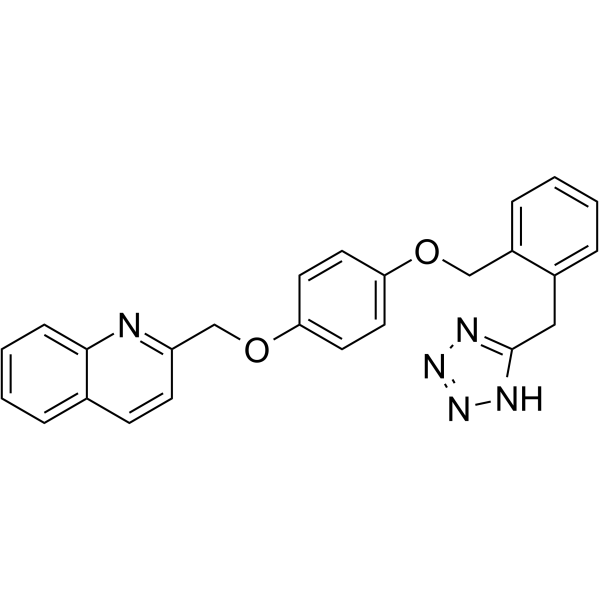
- HY-N0234
-
|
7-O-Methylbavachin; Bavachinin A
|
Amyloid-β
PPAR
HIF/HIF Prolyl-Hydroxylase
|
Inflammation/Immunology
|
|
Bavachinin is agonist of pan-peroxisome proliferator-activated receptor (PPAR), with the IC50 value of 21.043 μM, 12.819 μM, and 0.622 μM to PPAR-α, RRAR-β/δ, and PPAR-γ, respectively. Bavachinin is an inhibitor of HIF-1α. Bavachinin exhibits antitumor activity against non-small cell lung cancer by targeting RRAR-γ. Bavachinin is a natural compound with anti-inflammatory and anti-angiogenic activities. Bavachinin has orally bioactivity. .
|
-
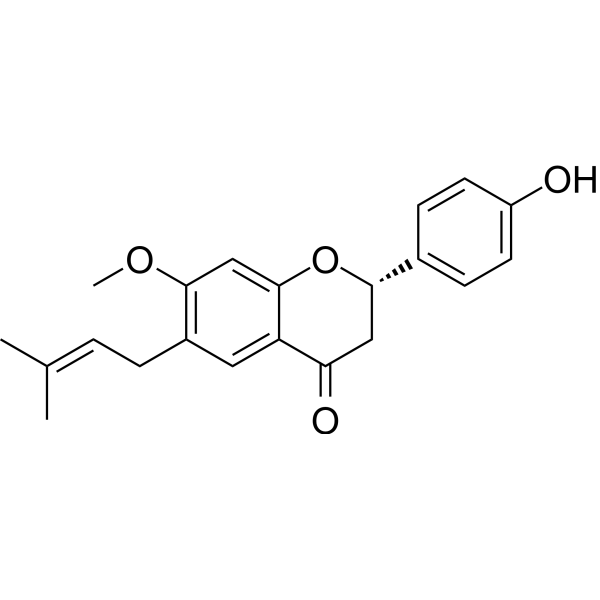
- HY-14728
-
|
R1439; RO0728804
|
PPAR
|
Metabolic Disease
|
|
Aleglitazar (R1439) is a potent dual PPARα/γ agonist, with IC50s of 38 nM and 19 nM for human PPARa and PPARγ, respectively. Aleglitazar can be used for the research of type II diabetes .
|
-
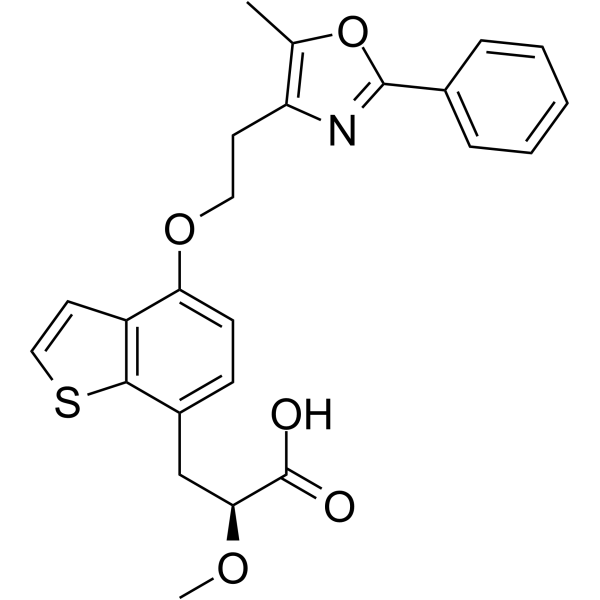
- HY-N0411
-
|
Provitamin A; beta-Carotene
|
Endogenous Metabolite
Apoptosis
Reactive Oxygen Species
|
Metabolic Disease
Cancer
|
|
β-Carotene (Provitamin A), a carotenoid compound, is a naturally-occurring vitamin A precursor. β-Carotene is a modulator of reactive oxygen species (ROS), with antioxidant and antiinflammatory activities. β-Carotene may serve as an antioxidant or as a prooxidant, depending on its intrinsic properties as well as on the redox potential of the biological environment in which it acts. β-Carotene induces breast cancer cells apoptosis, with anticancer activities .
|
-
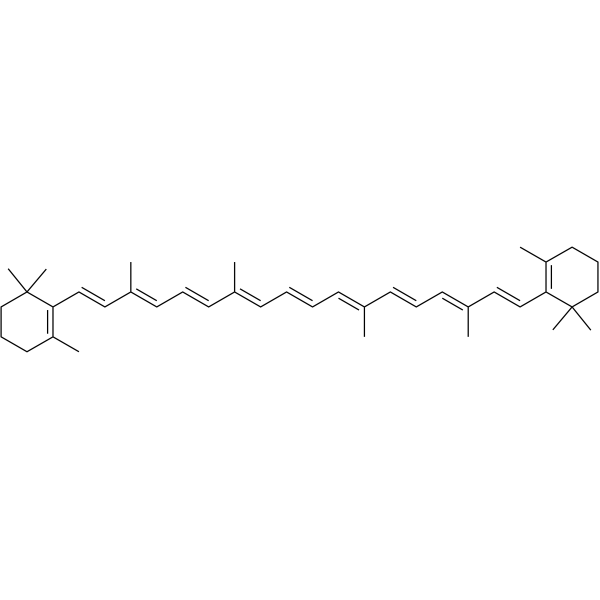
- HY-N11507
-
|
TKV
|
PPAR
|
Metabolic Disease
|
|
Tibesaikosaponin V (TKV) is a triterpene diglycoside, which can be isolated from the methanol extract of the roots of Bupleurum chinense DC.. Tibesaikosaponin V inhibits lipid accumulation and triacylglycerol content occurred without cytotoxicity to adipocytes. Tibesaikosaponin V suppresses the mRNA expression of nuclear transcription factors, such as peroxisome proliferator-activated receptor γ (PPARγ) and CCAAT/enhancer binding protein α (C/EBPα). Tibesaikosaponin V inhibits 3T3-L1 preadipocyte differentiation. Tibesaikosaponin V can be used fro research of obesity and its associated metabolic disorders .
|
-
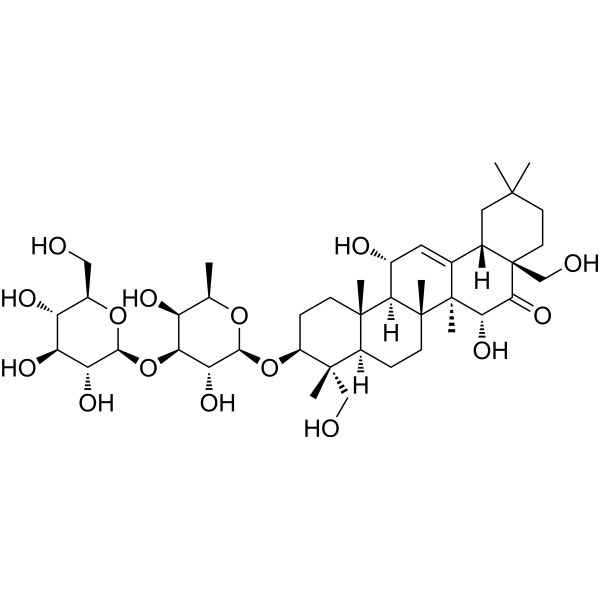
| Cat. No. |
Product Name |
Type |
| Cat. No. |
Product Name |
Category |
Target |
Chemical Structure |
| Cat. No. |
Compare |
Product Name |
Species |
Source |
Compare Products
|
| Products |
|
| Cat. No. |
|
| Species |
|
| Source |
|
| Tag |
|
| Accession |
|
| Gene ID |
|
| Molecular Weight |
|
| Purity |
|
| Endotoxin Level |
|
| Biological Activity |
|
| Appearance |
|
| Formulation |
|
| Storage & Stability |
|
| Shipping |
|
| Free Sample |
Yes
No
|
| Size |
* This product has been "discontinued".
Optimized version of product available:
|
| Cat. No. |
Product Name |
Chemical Structure |
-
- HY-17538S
-
|
|
|
ZLN005-d4 is deuterium labeled ZLN005. ZLN005 is a potent activator of peroxisome proliferator-activated receptor-γ coactivator-1α (PGC-1α)[1].
|
-

-
- HY-B0664S
-
|
|
|
Ciprofibrate-d6 is deuterium labeled Ciprofibrate. Ciprofibrate (Win35833) is a potent peroxisome proliferator, increases the phosphorylation level of the PPARalpha[1].
|
-

-
- HY-19937S1
-
|
|
|
Saroglitazar-d4 is the deuterium-labeled Saroglitazar (HY-19937). Saroglitazar-d4 is a novel peroxisome proliferator-activated receptor (PPAR) agonist with predominant PPARα and moderate PPARγ activity with EC50 values of 0.65 pM and 3 nM in HepG2 cells, respectively.
|
-

-
- HY-113341S
-
|
|
|
7ß-Hydroxycholesterol-d7 is the deuterium labeled 7α-Hydroxycholesterol. 7β-Hydroxycholesterol is an oxysterol that derived by the oxidation of cholesterol. 7β-hydroxycholesterol is a powerful inducer of oxidative stress, inducing dysfunction of organelles (mitochondria, lysosomes and peroxisomes) that can cause cell death[1][2].
|
-

| Cat. No. |
Product Name |
Application |
Reactivity |
-
- HY-P80872
-
|
CIMT1; GLM1; NR1C3; Nuclear receptor subfamily 1 group C member 3; peroxisome proliferator activated nuclear receptor gamma variant 1; peroxisome proliferator activated receptor gamma 1; peroxisome Proliferator Activated Receptor gamma; peroxisome prolife
|
ICC/IF, WB, IHC-F, IHC-P, ELISA
|
Human, Mouse, Rat |
|
PPAR gamma Antibody is a non-conjugated and Rabbit origined polyclonal antibody about 58 kDa, targeting to PPAR gamma. It can be used for ICC/IF,WB,IHC-F,IHC-P,ELISA assays with tag free, in the background of Human, Mouse, Rat.
|
-
- HY-P80871
-
|
PPARA; NR1C1; PPAR; peroxisome proliferator-activated receptor alpha; PPAR-alpha; Nuclear receptor subfamily 1 group C member 1
|
WB, IHC-F, IHC-P, ICC/IF, ELISA
|
Human, Mouse, Rat |
|
PPAR alpha Antibody is a non-conjugated and Rabbit origined polyclonal antibody about 52 kDa, targeting to PPAR alpha. It can be used for WB,IHC-F,IHC-P,ICC/IF,ELISA assays with tag free, in the background of Human, Mouse, Rat.
|
-
- HY-P80783
-
|
PPARGC1A; LEM6; PGC1; PGC1A; PPARGC1; peroxisome proliferator-activated receptor gamma coactivator 1-alpha; PGC-1-alpha; PPAR-gamma coactivator 1-alpha; PPARGC-1-alpha; Ligand effect modulator 6
|
WB
|
Human, Mouse, Rat |
|
PGC1 alpha Antibody is a non-conjugated and Rabbit origined polyclonal antibody about 91 kDa, targeting to PGC1 alpha. It can be used for WB assays with tag free, in the background of Human, Mouse, Rat.
|
Your information is safe with us. * Required Fields.
Inquiry Information
- Product Name:
- Cat. No.:
- Quantity:
- MCE Japan Authorized Agent:






























































